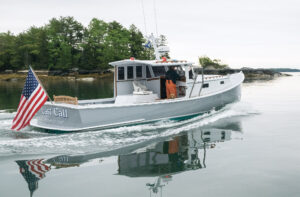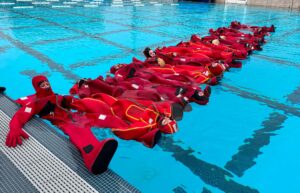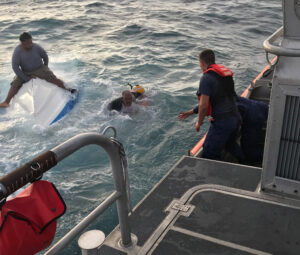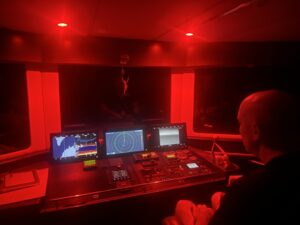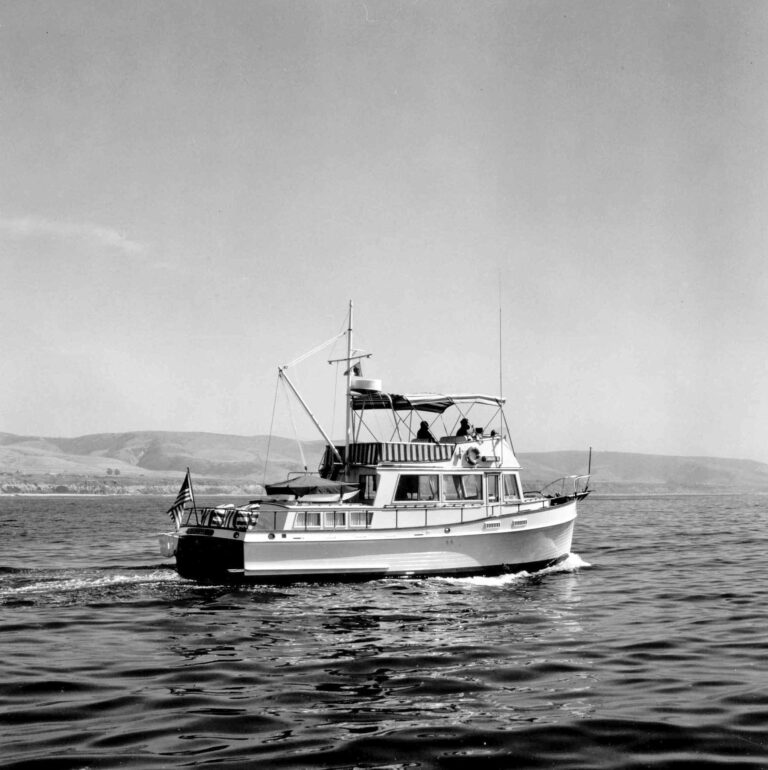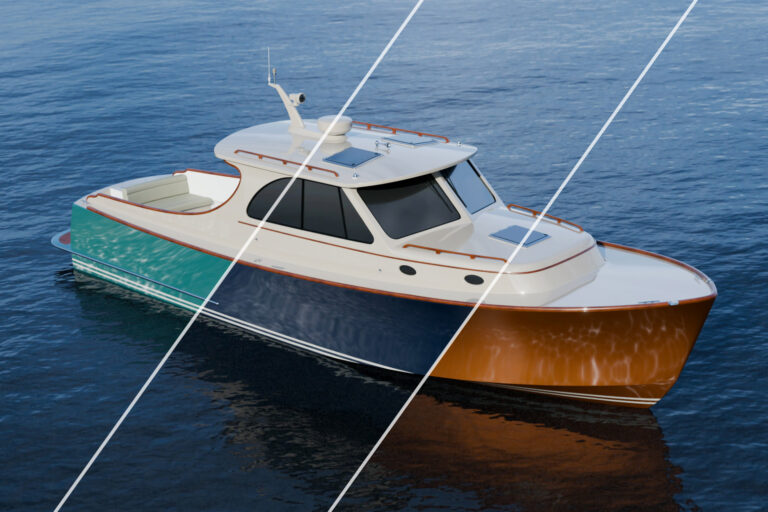
In 1919, at 21 years of age, Uffa Fox opened his boatbuilding business, Uffa Fox Ltd., on the Isle of Wight, launching the career of one of England’s great boat designers. Born in East Cowes, right on the Solent, Fox became a sailing enthusiast and quickly forged a reputation as an eccentric man.
Despite that, or maybe because of it, he developed a close relationship with the British royal family. In the above image Fox teaches the Prince of Wales, now King Charles III of England, how to sail. Fox had long been principal sailor for Charles’ father, Prince Phillip, and as legend goes, he once playfully tapped Queen Elizabeth II on the bottom while urging her to hurry on to an event. Of Fox, Prince Phillip wrote in the forward to Fox’s biography, “His life was one long campaign for the freedom of the human spirit and against the foolish, the stupid and the self-important, the whole conducted with a cheerful breeziness that disarmed all but the hardest of cases.”
Fox’s eccentricity was apparent from an early age. At 23, he served as scoutmaster to a group of nine Sea Scouts. Aboard a 27-foot open whaler, a vessel powered by oars and a sail, Fox and his teenage crew—unbeknownst to the scouts’ parents—crossed the English Channel and journeyed up the Seine, to Paris, coming within miles of their intended destination. Upon their return they were met by the Coast Guard. Fox and his crew had been presumed as castaways, and Fox, who had sworn his crew to secrecy beforehand, was dismissed as scoutmaster.
Despite his sometimes heedless actions and eccentric behavior, Fox would create a number of very succesful boat designs, including the O’Day Day Sailer and the O’Day Javelin. More than 15,o00 Javelins and Day Sailers were built, which introduced an untold number of Americans to the sport of sailing. Fox also contributed major innovations to dinghy sailing, including planing hulls and trapezing. Some of his designs, the Firefly, Albacore, Flying Fifteen and National 18 are still active racing classes. In 1943, Fox, who died in 1972, also designed the airborne lifeboat (A-1 lifeboat), an invention that was credited with saving hundreds of lives.
This article was originally published in the April 2024 issue.


